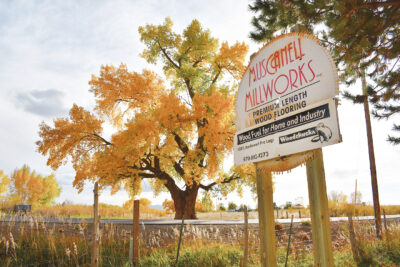With spring upon us, logging activity will be increasing in some areas. This is good news as many in the province and along the U.S. border states commented log supplies were low, which had been due to poor weather conditions, competition for logs and some controlled log costs. Prices, it was noted, for most species of grade lumber had stopped falling, but Hard and Soft Maple were the exceptions. Stable prices were seen mostly coming from reduced supply, with little showing that the overall consumption was increasing on markets.
Wholesalers interested in selling green Ash are reporting availability constraints, especially for thicker stocks. With green lumber production being down, kiln dried inventories are also waning, although not across all items, with prices varying.
Contacts noted that interest in Basswood had declined on domestic and international markets, and this since the last eight months. Purchases were being controlled to prevent excess inventory, with supplies meeting developing sales. Sawmill production of Basswood was down in the Appalachian region it was noted.
The regionally important Hard Maple is not doing so well at this time, along with Soft Maple. Purchases of these species over the last six to 12 months by cabinet and components, flooring and case goods manufacturers have gone down, resulting in lower prices. Loggers and sawmills are being cautious when it comes to lumber and log purchases of Hard Maple.
Soft Maple sales to end users are also reported as not doing well, which are to the case goods, moulding and millwork, cabinet and wood components producers, as well as slow demand from wholesalers. Supplies are reported as abundant, despite controlled production, with prices continuing their downward trend.
Demand of Cherry to Chinese markets is holding up. Sales competition is not as intense. There is firming in prices of kiln dried stocks. In some areas green prices are mostly static while in others are edging up.
According to contacts, market conditions for solid strip flooring to manufacturers improved, even though business is not strong, sales prices for most items have stabilized or have started edging up. Truck trailer flooring manufacturers, it was reported, had large order files for finished goods.
Wholesalers and end users are purchasing more green Red Oak due to reduced sawmill production and declining inventories, rather than to strong demand. Sawmills, it was noted, were avoiding Red Oak, and processing more ties and less grade lumber. Prices responded by edging up slightly. Kiln dried Red Oak inventories are leaner than a few months ago. Kiln dried lumber was not keeping pace with demand from China, resulting in price increases.
In 2022 White Oak production declined during the second half of the year. Gaps in green lumber supply and demand subsequently narrowed, and prices shifted from soft to stable, and more recently had firmed up. Kiln dried inventories have been low, with sales slightly better from the Far East.
Poplar logging activity in some regions over the past couple of months was disrupted due to wet weather, and those wanting to purchase Poplar logs had to go farther afield to get the volumes they needed. As such, green lumber production was low, and supply is not meeting demand.
Contacts note that Walnut sales had improved to export markets and domestic demand was doing well, with prices steady.
Statistics Canada’s preliminary estimate for real Gross Domestic Product (GDP) in December indicated the economy neither grew nor contracted, and suggested the economy grew at an annualized rate of 1.6 percent in the fourth quarter of 2022. In comparison, the economy grew at an annualized rate of 2.9 percent in the third quarter of 2022.
Royal Bank of Canada assistant chief economist said the latest GDP report adds more evidence that the economy is indeed losing momentum. The trend is expected to continue, he said. The impact of interest rate increases from the Bank of Canada to date, haven’t yet flowed through fully to household purchasing power, he added.
According to economists, the full effects of interest rate hikes usually take between 12 and 18 months to fully work its way through the economy. The Canadian economy lost steam as 2022 drew to a close, setting the stage for continued slowdown this year as high interest rates weigh on spending which coincided with Bank of Canada’s aggressive interest rate hikes.
The Bank of Canada said in mid-February that it was taking a conditional pause on further hikes to the key rate, which now stands at 4.5 percent, keeping the door open to further increases if inflation isn’t tamed.
The economy, roaring in the first half of 2022 as it rebounded from the COVID-19 pandemic, grew by 0.1 percent in November, said the Bank of Canada. Statistics Canada estimates the economy grew by 3.8 percent last year.
Growth in real domestic product for November was driven by the public sector, transportation and warehousing and finance and insurance. An economic slowdown is expected to extend to other sectors in the economy and impact employment levels as businesses facing lower sales adjust hiring plans.
Canada’s annual inflation rate has slowed since the summer and reached 6.3 percent in December 2022. The central bank wants to see the inflation rate fall back to its two percent target and expects that to happen in 2024.
Looking ahead, many economists are anticipating a mild recession in 2023. However, they expect the economy to recover in the second half of the year.








